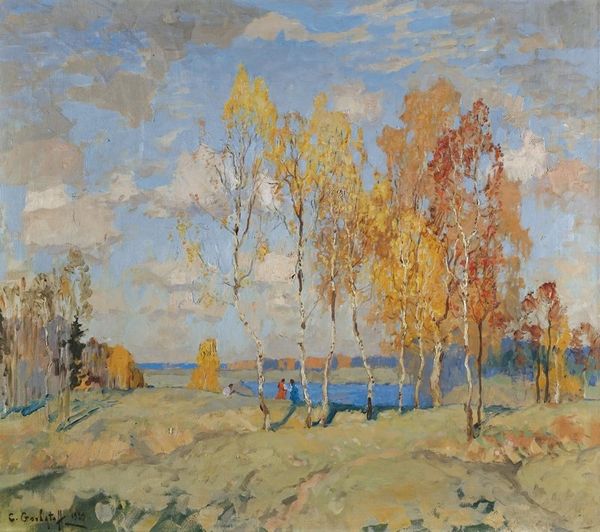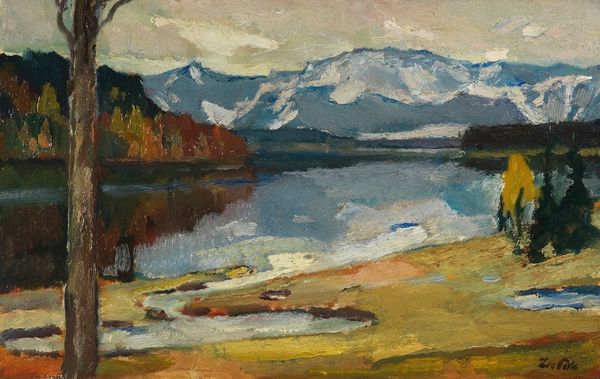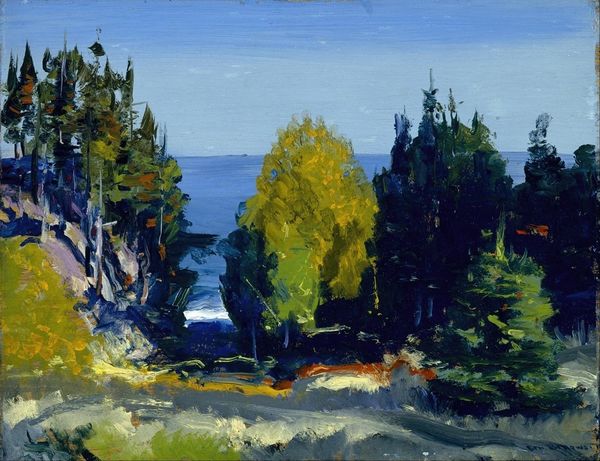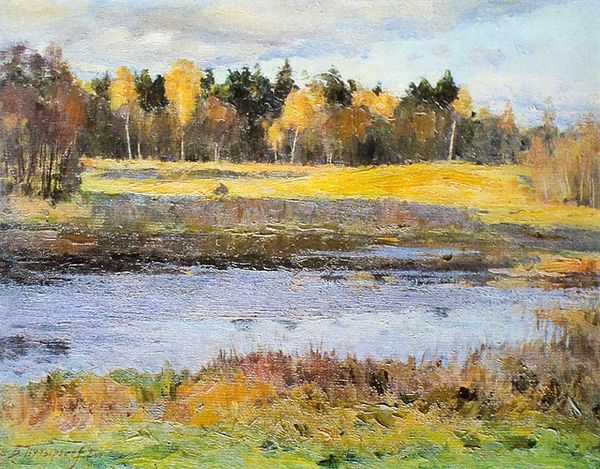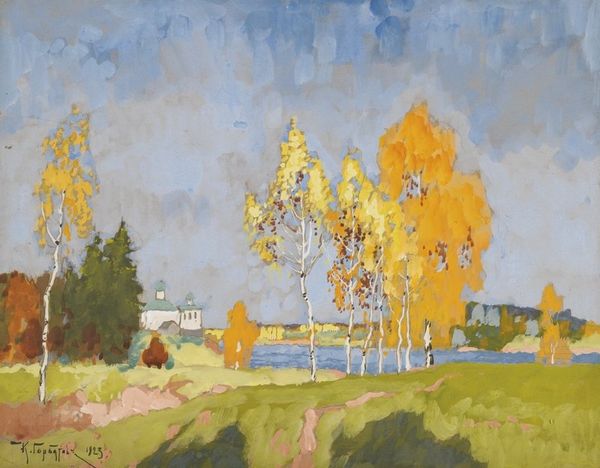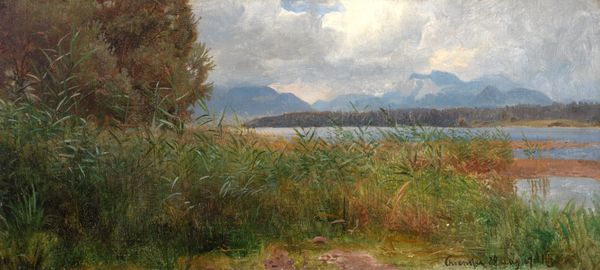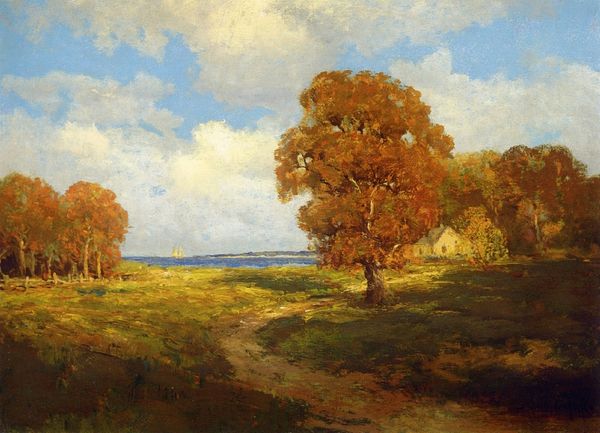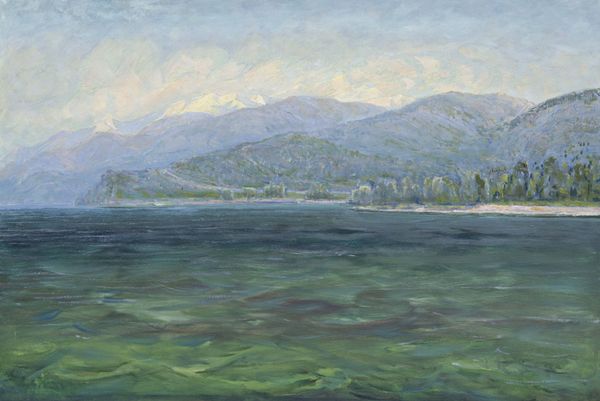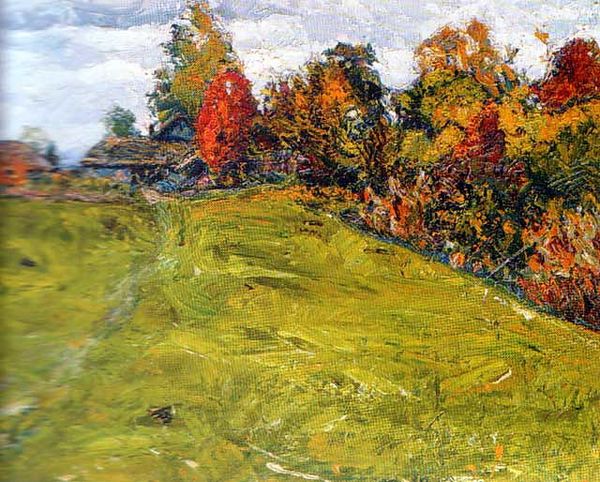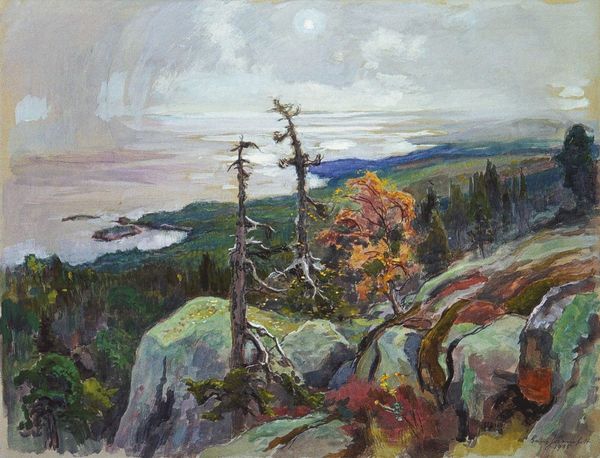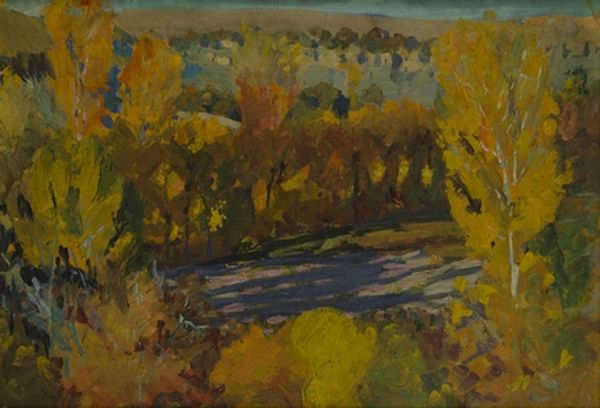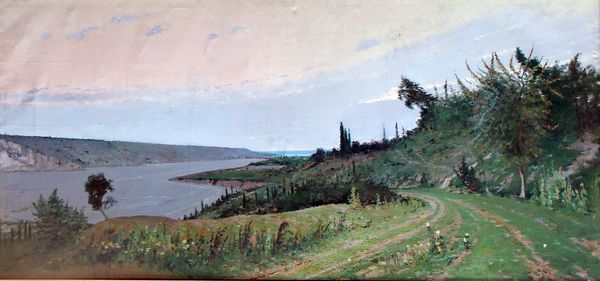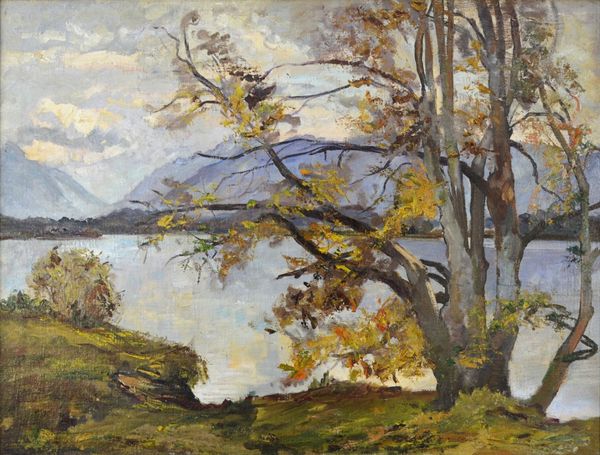
Dimensions: 43 x 82 cm
Copyright: Mikhail Olennikov,Fair Use
Curator: Looking at this painting, "Golden Autumn in Turku" by Mikhail Olennikov, made in 1998, the overall palette immediately brings to mind a cool, crisp day near the Baltic Sea. The textures from the oil paint are luscious, really bringing life to this snapshot of nature. What is your initial take on this painting? Editor: There's an underlying sense of melancholic beauty here. The rich, warm hues of the trees, almost a fiery orange, are set against that steely, deep blue sea and greyish sky. Autumn is often symbolic of endings, of letting go. Does the painting hold any significance related to the local history of Turku or the cultural context of Finland in the late 90s? Curator: Good eye! While I can’t pinpoint a specific historical event it directly references, remember Finland went through a severe recession in the early 90s, impacting arts funding and societal mood. So, there's definitely the potential for that period's introspection finding its way into works of art. In some ways, you might see this work of art standing as an act of defiance, a way to claim hope when all other signs pointed at dispair. It definitely ties in with broader concerns around national identity and perseverance that surface a lot. Editor: Yes, the perseverance rings through with that almost defiant golden glow against the looming shades of blue. The stand of pine trees there... pine trees have historically been symbols of resilience and long life, almost like cultural markers through time. Curator: True, and Olennikov's choice to portray them with such attention seems meaningful. This work reminds us how the impact of public and historical issues of any given era is hard to isolate in art, even something seemingly so simple as a landscape. It’s not always overt propaganda but those subtle cultural fingerprints are there. I wonder, are there certain Finnish art traditions, in particular, to which this painting speaks? Editor: I believe so. There is this long tradition that almost every natural symbol ties into Finnish identity. And landscapes were ways to build visual memory, cultural visual memory, but the way Olennikov captured the ephemeral light is like imprinting this one autumn onto collective memory. So maybe we do find, at least partially, the sense of perseverance of this particular natural landscape. Curator: Thanks. It's been insightful. I find my appreciation growing each time I see it. Editor: And I see those trees now with a greater sense of endurance, indeed. Thank you!
Comments
No comments
Be the first to comment and join the conversation on the ultimate creative platform.
